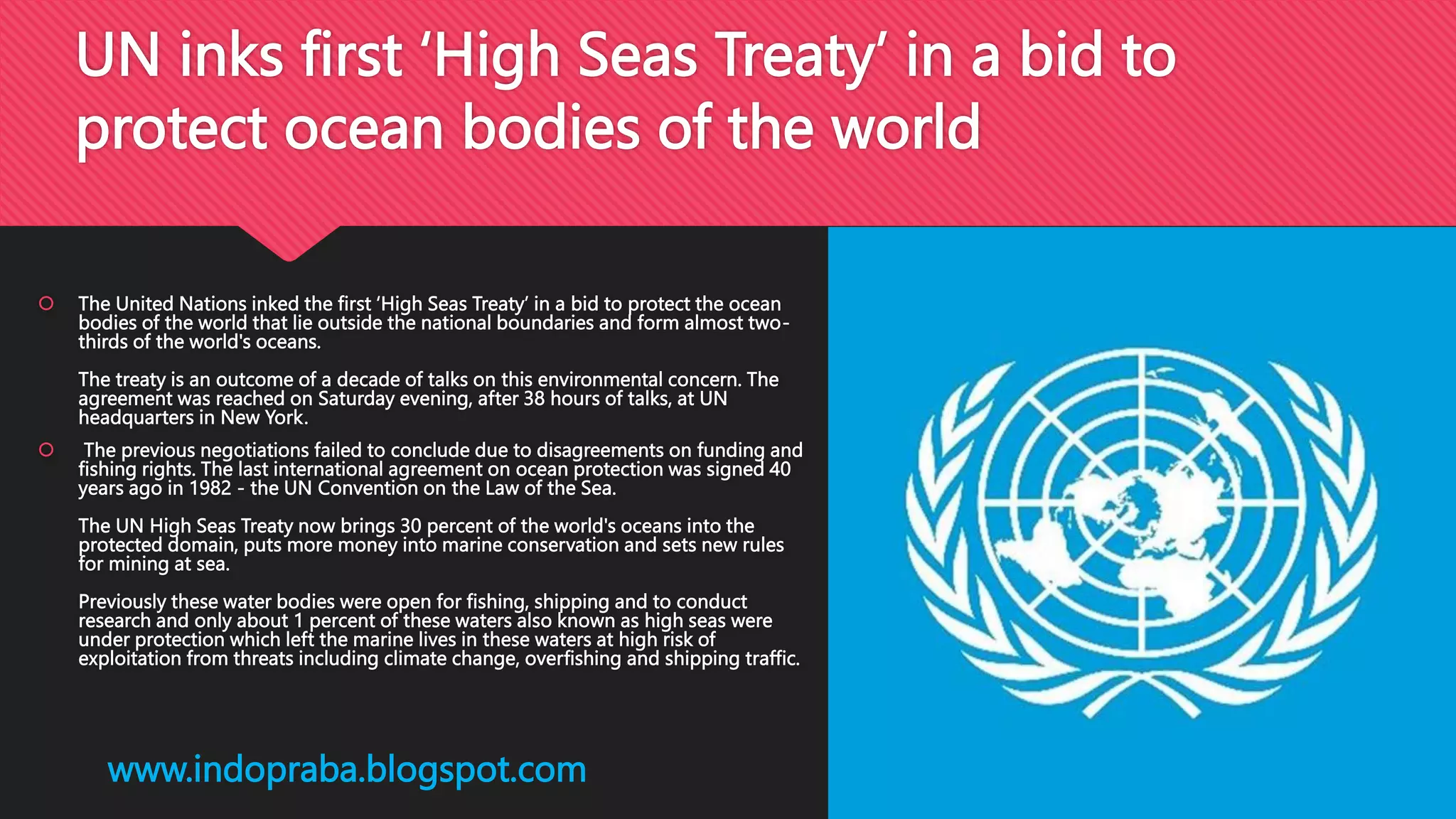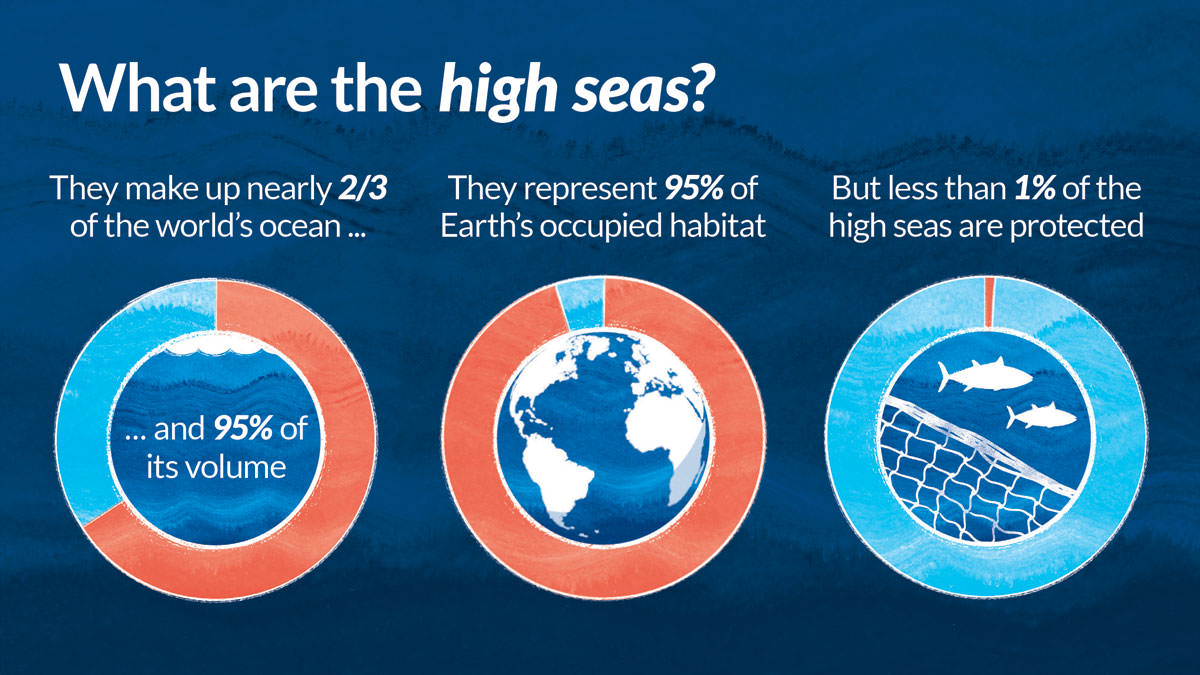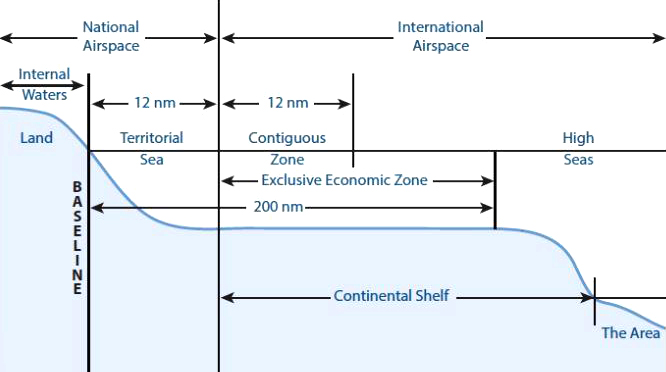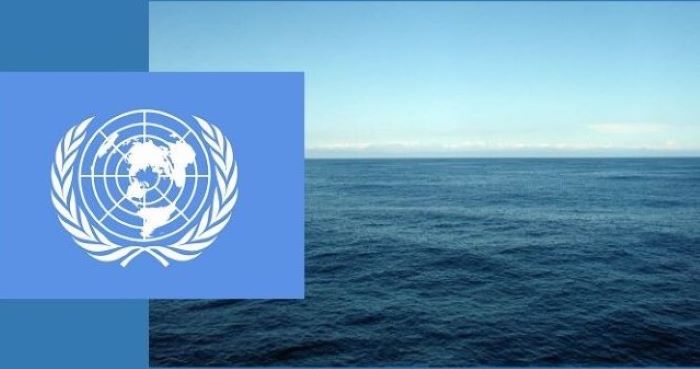The United Nations(UN) inked the first ‘High Seas Treaty’ in a bid to protect the ocean bodies of the world that lie outside the national boundaries and form almost two-thirds of the world’s oceans.

More About The High Seas Treaty:
- The treaty is an outcome of a decade of talks on this environmental concern.
- The previous negotiations failed to conclude due to disagreements on funding and fishing rights.
- The last international agreement on ocean protection was signed 40 years ago in 1982 – the UN Convention on the Law of the Sea.
What is the UN High Seas Treaty:
The treaty will create a new body to manage the conservation of marine life and establish marine protected areas in the high seas. Also referred to as the ‘Paris Agreement for the Ocean’, the treaty to deal with Biodiversity Beyond National Jurisdiction (BBNJ)
The Extent of The UN’s High Seas Treaty:
The UN High Seas Treaty now brings 30 percent of the world’s oceans into the protected domain, puts more money into marine conservation and sets new rules for mining at sea.
Need of the High Seas Treaty:
- Previously these water bodies were open for fishing, shipping and to conduct research and only about 1 percent of these waters also known as high seas were under protection which left the marine lives in these waters at high risk of exploitation from threats including climate change, overfishing and shipping traffic.
- As per the red data book of the International Union for Conservation of Nature (IUCN), nearly 10 percent of marine species, were found to be at risk of extinction. Further, the IUCN estimates that 41 percent of the threatened species are also affected by climate change.
The Aim of The High Seas Treaty:

- The High Seas Treaty now places 30 percent of the world’s international waters into protected areas (MPAs) by 2030.
- The treaty aims to protect against potential impacts like deep sea mining. This is the process of collecting minerals from the ocean bed.
- The treaty amongst other things will put a restriction on how much fishing can be done on the high seas.
- According to the International Seabed Authority that oversees licensing any future activity in the deep seabed will be subject to strict environmental regulations and oversight to ensure that they are carried out sustainably and responsibly.
What Are High Seas:

- The ocean surface and the water column beyond the EEZ are referred to as the high seas.
- It is considered as “the common heritage of all mankind” and is beyond any national jurisdiction.
- States can conduct activities in these areas as long as they are for peaceful purposes, such as transit, marine science, and undersea exploration.




 Govt. Extends Tenure of SBI MD Ashwini K...
Govt. Extends Tenure of SBI MD Ashwini K...
 Google Launches Its First-Ever Credit Ca...
Google Launches Its First-Ever Credit Ca...
 Top and Bottom 10 Countries in the Globa...
Top and Bottom 10 Countries in the Globa...







